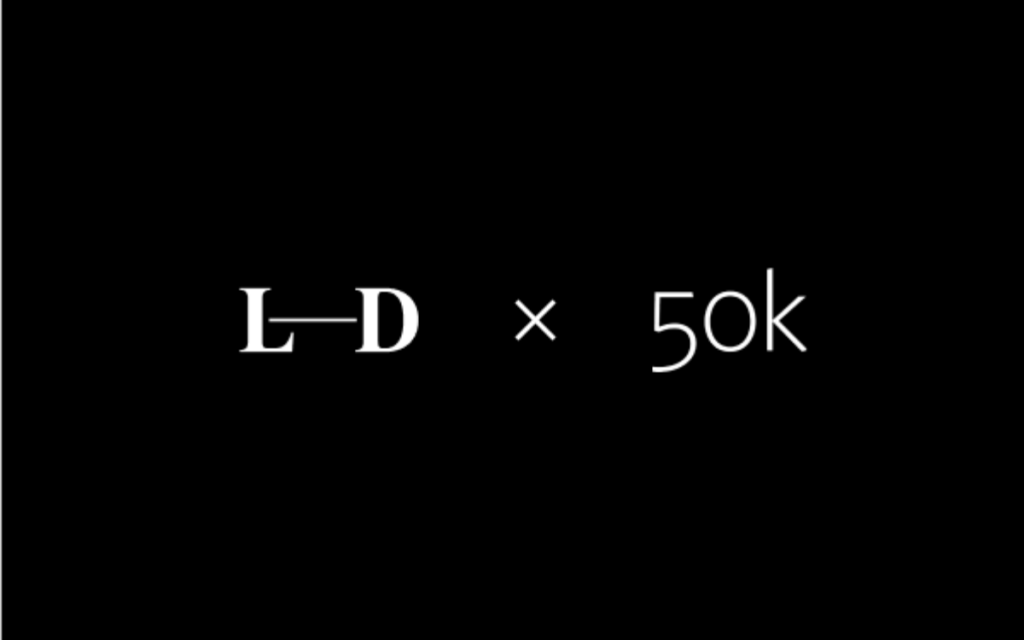Not All Data Are Created Equally
To evaluate brand health, replace your vanity metrics with ones that offer real insights
Aaron Morrissey is an editorial director at Long Dash. He was previously the editor-in-chief of DCist.com and has contributed to The Washington Post and Washington City Paper, among others.
A shortened version of this article originally appeared in MediaPost.
All too often, brand strength is treated with an air of mysticism, with consumers and business professionals alike declaring a brand strong or weak in a “you-just-know-it-when-you-see-it” fashion. But the reality is that brand strength boils down to how much the brand’s experience resonates with audiences. This not only can but must be measured as an indicator of a company’s health.
The challenge lies in identifying the right data and metrics for your business. The struggle is daunting as methods and types of data collection can be overwhelming. The main pitfall is a common one: focusing on vanity metrics—“did our landing page get more pageviews this month?”—rather than assessing how a deeper analysis of information can best inform their strategy by discovering what audiences need and want.
As a result, these brands typically launch initiatives and hope for the best, think about measurement retroactively, or have simplistic goals of surface-level outcomes in mind. Others take a fragmented approach, defining success differently across teams within their organization—one may be focused on optimising organic search traffic, while others may be more focused on increasing engagement on owned social platforms. In any of these cases, too many efforts to wrangle this massive potential are focused on creating stale readouts without considering what the data can tell us, what audiences actually want, and how to use insights to drive better decisions.
How can brands ensure they’re actually measuring the extent and impact of relationships in the right ways? Here are a few things they can do to get started.
Train your team to embrace, not fear, the spreadsheets
Today’s companies are not struggling to gather data, but rather learn from data. Through standard analytics tools, teams can instantly see how many people are reading an article, streaming a video, downloading a podcast, and liking and sharing content on social media. With more advanced but readily available tools and monitoring, they can dive deep into sentiment, relationship, and other qualitative metrics.
However, there are two common pitfalls. The first is that metrics are often tied to team performance and the KPIs each team is responsible for tracking and improving. Therein lies the temptation to lean on vanity metrics that prop up performance or report data out in a perfunctory fashion. The second, more challenging, obstacle is that data can be incredibly intimidating for employees who aren’t trained to digest and analyze it. All too often, the job gets transferred to the sole “numbers” person on the team or a siloed team focused on business analytics.
While every industry has its nuances, one example to learn from is The New York Times’ open source data training program. It was developed for beat reporters and editors to become comfortable at building and reviewing data sets to strengthen their stories. While there are certainly data analysts and data journalists who live and breathe data to create compelling infographics, the media company saw the clear benefit for all team members to take part in the broader data-driven culture.
Analyze your data to build better experiences
Making the most out of measurement boils down to constantly challenging the things you take for granted. If you’re simply crunching numbers, you’re casting aside a wonderful opportunity to ask meaningful questions that could translate into greater successes with your audiences over the long-term. What do data mean in terms of their lived experiences?
Sign up for OnBrand
Our weekly digest featuring ideas on the future of brand.
Spotify is one example of an organization that goes above and beyond basic analysis to find deep insights that serve its audiences. Of course, the streaming app collects all sorts of basic information about its content—I’m sure that folks within their offices can report to their bosses whether more or less people are listening to The Weeknd than this time last year. But Spotify also digs well beyond standard metrics and analyses—for example, how many times people in Omaha played Nirvana’s Nevermind and Soundgarden’s Superunknown in that precise order during March 2021. They’ve actually coded their catalog with musical traits like danceability and valence to understand how and when people listen by traits, hence why they can proactively serve up the right song for your “family dance-off in the kitchen” playlist.
Granted, not every organization has access to Spotify’s quantity of data or audience familiarity. The bigger point is that when brands coast on gathering top-line quantitative information without audience analysis, it makes more meaningful measurement nearly impossible. This behavior often stems from a starting point of short-sighted goals (“I would love to see people sharing a blog post”), layered over an obsession with broadcasting (“We have an obligation to create awareness of our resources or we aren’t delivering value to our members”), and ends up in an existential crisis: “What is the point of all the content we are creating?”
When we know what we aimed to achieve and the actions we took, we can then truly assess the outcome and make intelligent decisions that ensure our brand initiatives are unique, authentic, and resonant. When you’re approaching measurement, consider three questions:
- What will people within the company be able to do or understand as a result of knowing this information?
- What are the insights that are the most relevant to help them in their role?
- Are these insights that have been investigated as to whether they’re a trend or an anomaly?
If you’re able to address these questions, your insights will have a more meaningful impact.
Notice what surprises you
Analytics and content teams have a tendency to look mainly at their best performing or most replicable work. This inclination is human: if you know the secrets behind your greatest hits, you can probably replicate them again and again. However, if you only pay attention to the most popular pieces of content you can end up trying to identify an elusive formula for creativity (hint: it doesn’t exist) rather than understanding the broader context of your audience’s needs. By looking beyond the original question you sought to answer, and getting curious about new ones, you might discover far more than you intend to.
In previous work for a major education company, we were charged with identifying types of digital content that appealed to parents seeking educational resources. The goal was to strengthen brand awareness in curriculum development, classroom materials, and textbooks. As the parent surveys came back, we got the results back to determine which content categories performed best as was determined by the scope of work. However, there was something curious that arose. There was a significantly high number of 65+ female respondents, far older than the age of a typical parent. We came to understand that it was grandparents, particularly grandmothers, who were often as deeply engaged with their grandchildren’s education as the parents themselves. In getting curious about these data, we discovered an influential and engaged audience segment that had been entirely unbeknownst to the company.
By investing in developing the right data-driven culture and identifying the correct markers of success, measuring brand strength shifts from elusive target to north star. So, while not all data are created equally, finding the right data points makes all the difference.





